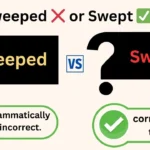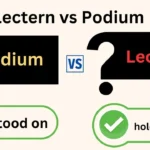In today’s digital and literary landscapes, the terms “imbed” and “embed” often create confusion. Although they may seem interchangeable, understanding their distinct meanings and proper usage is essential for clear and effective communication.
This article delves into the nuances of “imbed” and “embed,” offering comprehensive insights into their definitions, usage, and stylistic considerations.
Definitions and Origins
Definition of “Embed”
“Embed” is the more commonly used term and serves as both a verb and a noun. As a verb, it means to fix or set something firmly within a surrounding mass. For example, in technology, you might embed a video within a webpage. As a noun, it refers to something that is embedded, such as an embedded link.
Etymology: The word “embed” comes from the Old English embeddan, which means “to fix firmly.” It combines en- (to cause to be in) with bedd (bed), suggesting the idea of setting something in place as if placing it in a bed.
Definition of “Imbed”
“Imbed” is an alternative form of “embed,” though it is less commonly used. As with “embed,” it functions as both a verb and a noun. The verb form means to fix something into a surrounding mass, similar to “embed.”
Etymology: “Imbed” originates from the Latin imbibere, which means “to drink in.” The prefix im- (into) combined with bibe (to drink) suggested the idea of absorbing or fixing something firmly, which evolved into its modern usage.
Usage in Modern English
Common Usage of “Embed”
“Embed” is prevalent in various contexts, especially in technology and media. Here are some typical scenarios:
- Technology: “You can embed a video into your blog post to make it more engaging.”
- Media: “The news article embedded several images to illustrate the story.”
- General Use: “She embedded her personal touch into the project.”
Examples in Official Writing:
- Technical Manuals: “The software allows users to embed external content directly.”
- Academic Papers: “Figures and tables are embedded within the text to provide clarity.”
Common Usage of “Imbed”
“Imbed” appears less frequently but is sometimes seen in specific contexts:
- Historical Texts: “The artist’s signature was imbed in the painting’s lower corner.”
- Technical Writing: “The imbed process was described in detail.”
Examples in Official Writing:
- Historical Documentation: “The term ‘imbed’ was used in older texts to describe the process of fixing items into place.”
- Specialized Fields: “Certain technical manuals may still use ‘imbed’ based on historical practices.”
The Debate: Imbed vs. Embed
Historical Preferences
Historically, “embed” has been the preferred term in most modern contexts. However, “imbed” was more common in earlier English usage and still appears in some older texts.
- Early Usage: In the 19th and early 20th centuries, “imbed” was frequently used in literature and technical writings.
- Modern Shift: As language evolved, “embed” became the standard term, particularly in digital and media contexts.
Current Linguistic Trends
Today, “embed” dominates both formal and informal communication. Linguistic trends show a strong preference for “embed,” influenced by:
- Digital Media: The rise of digital content has reinforced the use of “embed” in technical contexts.
- Language Evolution: Modern dictionaries and style guides recognize “embed” as the standard term.
Contextual Differences
When to Use “Embed”
“Embed” is appropriate in a wide range of contexts:
- Technology: Use “embed” for digital content and software contexts. For example, “You can embed a video player into your website.”
- Media: In journalism and media, “embed” refers to incorporating multimedia elements. For example, “The article included embedded social media posts.”
Examples:
- Web Design: “To enhance user experience, we embed interactive elements.”
- Content Creation: “Embed images and videos to make your posts more visually appealing.”
When to Use “Imbed”
“Imbed” is typically used in specific or historical contexts:
- Historical Writing: When discussing older texts or historical usage. For example, “In 19th-century texts, the term ‘imbed’ was common.”
- Technical Specifications: Rare instances in technical documentation where historical terminology persists.
Examples:
- Archival Research: “Historical documents may use ‘imbed’ in place of ’embed.'”
- Specialized Fields: “Certain technical fields may retain ‘imbed’ for legacy reasons.”
Stylistic Considerations
Formal vs. Informal Usage
Formal Contexts:
- Preferred Term: In formal writing, such as academic papers or official documents, “embed” is preferred.
- Examples: “The study embedded detailed charts to support the research findings.”
Informal Contexts:
- Usage: Both “embed” and “imbed” can appear in informal contexts, but “embed” is more common.
- Examples: “I embedded a fun video in my social media post.”
Regional Variations
Different English-speaking regions may have preferences for “embed” or “imbed”:
- American English: “Embed” is the standard term.
- British English: “Embed” is also preferred, though “imbed” may appear in older texts.
Regional Preferences:
- United States: Modern usage favors “embed” in both formal and informal contexts.
- United Kingdom: Similar to the US, “embed” is standard, but “imbed” may still be seen in historical or specialized texts.
Conclusion
Understanding the difference between “imbed” and “embed” is crucial for effective communication. While “embed” is the preferred and modern term used across various contexts, “imbed” has historical significance and appears in specific or older contexts.
For clarity and precision, especially in formal writing and digital contexts, opting for “embed” is generally advisable.

As an experienced English teacher, I’m Jessica Thompson, here to make grammar and vocabulary simple and fun. Join me on TalkSpeaker as we explore the language together, one lesson at a time!



